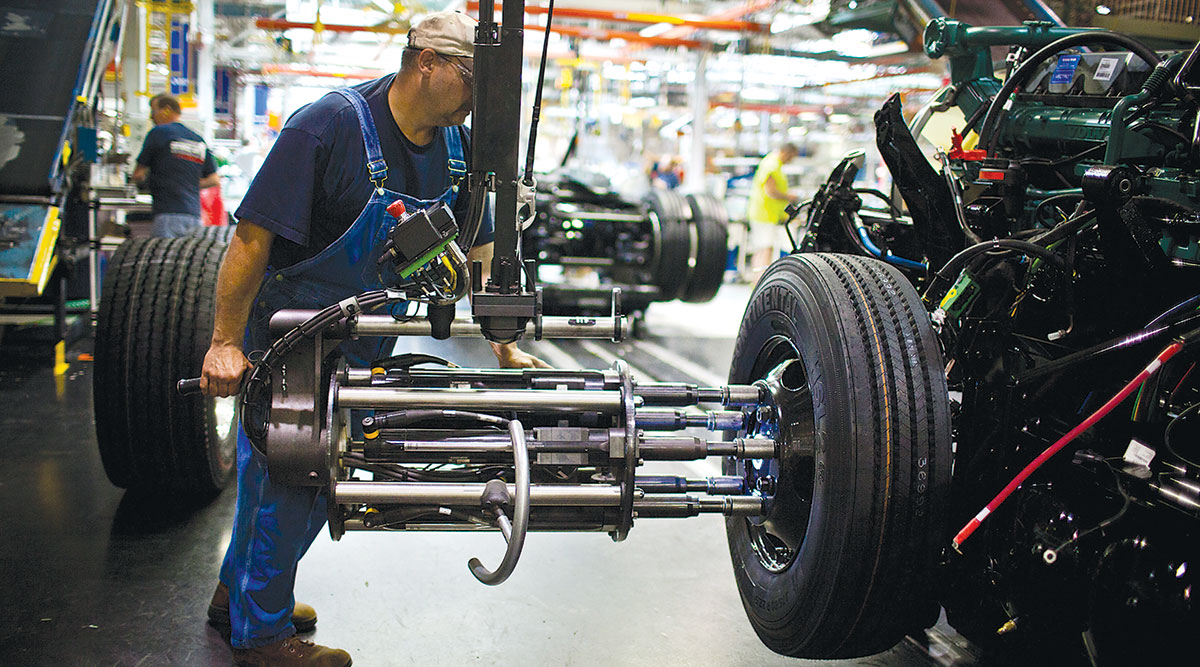Senior Reporter
May Truck Orders Top 16,000 on Replacement Demand

This story appears in the June 12 print edition of Transport Topics.
Orders for Class 8 vehicles in May cleared 16,000 to improve 18% year-over-year amid expectations that demand will continue at replacement level, or slightly higher, analysts said.
ACT Research Co. put the total at 16,800, citing preliminary figures it will revise later this month. That is up from 14,224 orders a year earlier.
“It’s more of a commentary on where we were last year than where we are this year,” ACT Vice President Steve Tam told Transport Topics. “Nothing has changed from a fundamental perspective this year. We are still chasing freight growth. We still have excess capacity. We are still a little bit surprised at the strength of the order demand over the last two quarters in light of those fundamentals.”
However, ACT will take its forecast up slightly this month.
The increase is based not so much on the magnitude of orders in May but on what ACT is seeing in production for the first four months of the year, Tam said. The truck makers “continue to moderately increase their build plans for the rest of the year.”
ACT’s current Class 8 North American production forecast is for 228,000 vehicles in 2017, which is replacement demand, he said. “That’s, for all intents and purposes, an average market — neither good nor bad.”
Its update “will cross that 230,000 threshold — maybe 230,000 and change — but I’m guessing less than a 5,000-unit increase,” Tam said.
Research company FTR pegged its net order total at 16,300.
The market is operating more normally than it has for a long time, said Don Ake, FTR’s commercial sector vice president.
“The only thing [the May total] indicates is that the market has not taken off,” Ake said. “People got their orders in the first four months, and things have slowed down in May instead of June. The market is not growing out of control.”
Orders each month this year until May have been above 22,000 and most recently were 23,900 in April.
The slowdown in activity will give truck makers a chance to line up production with demand, Ake said, “because they have been ramping up and having a little struggle catching up.”
“Whenever you have to increase production, you can’t do it right away,” he said. “But because the orders backed off, it gives them a chance to catch up in the third and fourth quarters.”
Looking into the details of the latest orders, Credit Suisse Analyst Jamie Cook noted some “lumpiness” and said the decline was fairly broad-based.
“In terms of mix, vocational and linehaul seem to now be performing more in line with one another, though this is largely expected as vocational usually takes a step back during this time of year,” she wrote in a note to investors.
“On the positive, used-truck volumes are holding up on a good level, and ‘comps’ on pricing will get easier as we progress through the year,” Cook added.
Meanwhile, used-truck values haven’t recovered, but they have stabilized, Tam said.
“In fact, one could argue they have returned to almost a normal depreciation schedule. Many of these smaller truckers and owner- operators were pretty significantly upside down on their equipment valuations, 12 to 18 months ago,” he said.
Higher trade-in values spur order activity, resulting in sales, he said.
Looking ahead, Class 8 orders over the next few months will be about the same as the May volume, Tam suggested.
“I don’t know that we will see orders necessarily fall below the 16,000-and-change we had in May,” he said, “but they certainly will be relegated to those midteen numbers.”

